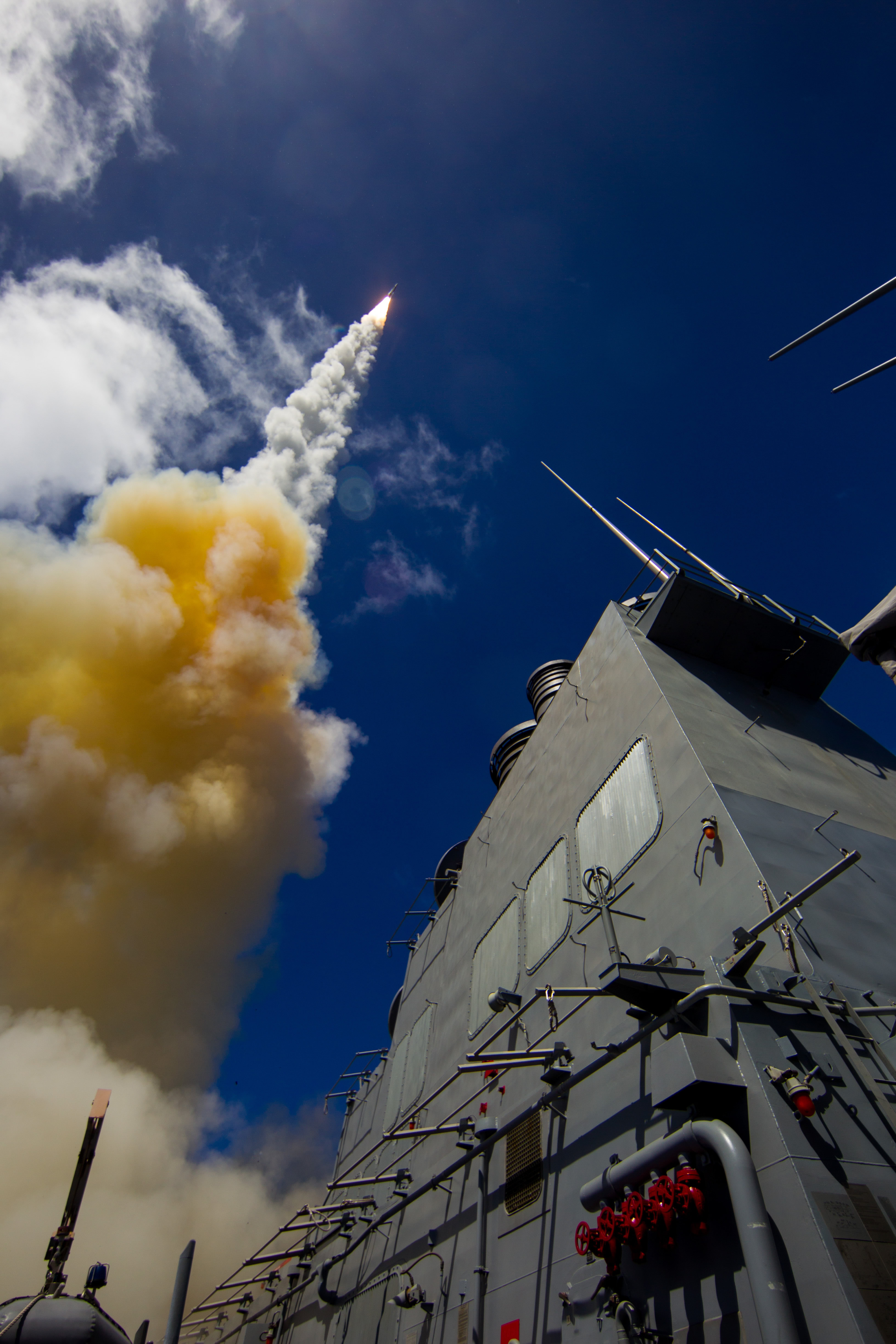
Guam “would absolutely need” the Navy’s SM-6 missile for its defense against a hypersonic missile attack, the program executive for Aegis ballistic missile defense said Thursday.
Rear Adm. Tom Druggan called the SM-6 “our leading defense capability for hypersonic missile defense.” It is “a fantastic missile, just absolutely great missile” because of its versatility.
Speaking at the United States Naval Institute’s maritime security series at the Center for Strategic and International Studies, he added that “we really need HMD [hypersonic missile defense]” for Guam.
Druggan was speaking days after Russia successfully destroyed one of its older satellites in a missile test, scattering more than 1,500 articles of debris in space. Meanwhile, China over the summer performed a hypersonic missile test that U.S. defense officials have recently described as concerning.
Although he would not detail his recommendations to Congress on Guam, Druggan said one question that needs to be answered is whether it is worthwhile to have a “multi-mission ship [like an Aegis destroyer] tethered” to the island. This would be similar to what the Navy does from Rota, Spain, in providing European defense.
Druggan, whose current post is at the Missile Defense Agency, explained that having one ship assigned to the missile defense mission actually meant having at least two others on schedule to replace it when it comes off station for necessary maintenance. This has an impact on overall Navy operations because the Aegis destroyers can be assigned to a host of missions other than missile defense.
In terms of manpower, Druggan said that if three destroyers were involved in meeting the ballistic missile requirement, then that would involve about 900 sailors. If it were Aegis Ashore on a rotational basis, he said that would require about 100 sailors to meet the mission.
Former U.S. Indo-Pacific Command chief Adm. Phil Davidson earlier this year said building Aegis Ashore on Guam would “free up” three Navy destroyers for other tasking.
“The Guam defense system brings the same ability to protect Guam and the system itself as the three DDGs it would otherwise take to carry out the mission,” Davidson said at the time. “We need to free up those guided-missile destroyers, who have multi-mission capability to detect threats and finish threats under the sea, on the sea and above the sea, so that they can move with a mobile and maneuverable naval forces that they were designed to protect and provide their ballistic missile defense.”
Other questions remain over what kind of missile defense is needed for Guam, with its large air base and naval facilities, in terms of denying North Korea, deterring China and denying China.
“With each one of those [threats], you come up with a different set of options,” Druggan said.
Among the options under consideration, Druggan said “Aegis is an acceptable alternative” because it addresses ballistic, cruise and hypersonic missile threats. It’s also integrated with other air defense systems and networked with sensors globally and in space.
“We’re doing it 360 degrees; we do it reliably with the right level of firepower; we’re doing it at the network level” at sea and on land, he said.
He called it a “robust capability.”
Another “rich and valid discussion to have” is “where would we put launchers” for cruise missile defense, for instance. He asked rhetorically whether a naval missile designed for cruise defense over water is optimal for defense over an island like Guam, or should it be an Army system that can operate over land and some water.
Other considerations specifically for Guam include should Aegis Ashore get installed, whether its configuration with a single deck house containing all capabilities – like what is now operating in Romania and under construction in Poland – would be survivable in an all-out attack.
The threats in Europe that Aegis Ashore is defending against are coming from Iran, particularly. Druggan noted the systems there are not designed to counter Russia’s missile arsenal.
Posing the follow-up question to himself, Druggan asked “do you want to disperse it or do you [want] it mobile?”
When asked about progress on Aegis Ashore in Poland, he said the project is “behind schedule,” but has “good momentum now.”
“We’re not going to wait” until construction is complete before setting up and testing systems as was done in Poland, Druggan said. “We’re working parallel” to the continued building.
In the recent past, the Army Corps of Engineers overseeing the project said it withheld payment to the Polish contractors unless they brought the work back on schedule and to budget.
With a history dating back into the 1970s of “build little, test little, learn more,” Druggan sees Aegis as “a perfect place” to introduce machine learning and artificial intelligence into Navy practice. He added that with this experience, sailors to captains on Aegis vessels are culturally comfortable with systems that can operate from manual control to auto special.
But in all cases, accountability rests with the commander and would, in Druggan’s opinion, remain so when operating with artificial intelligence and machine learning. “Warfighters want a vote [on what to do in combat as part of their ethos]. …That’s ground to be plowed,” he said.
He added, “it is the CO who is accountable for any weapon that leaves; and so when we get to AI, we can’t blame the algorithm for the mishap. It’s not in our military ethos, not in our warrior ethos” to believe otherwise.





